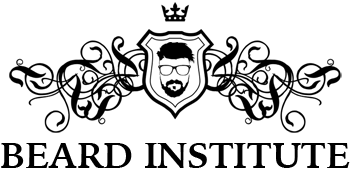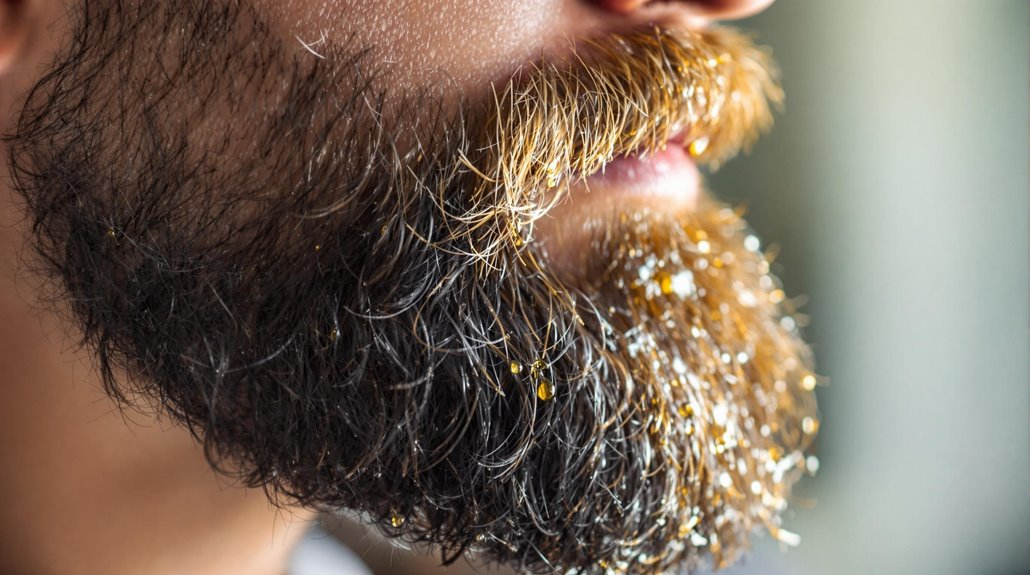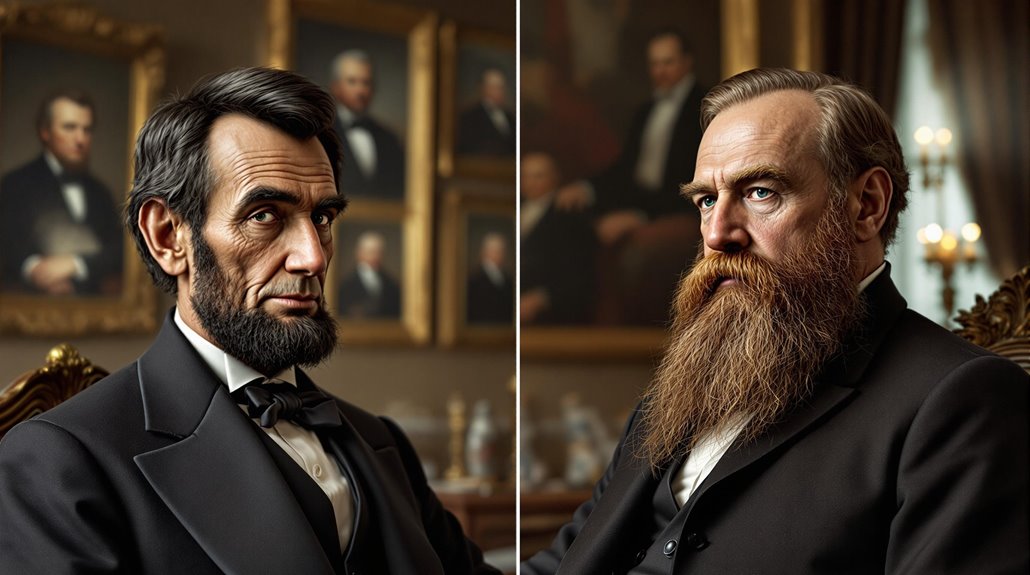What Was the Original Purpose of a Beard?
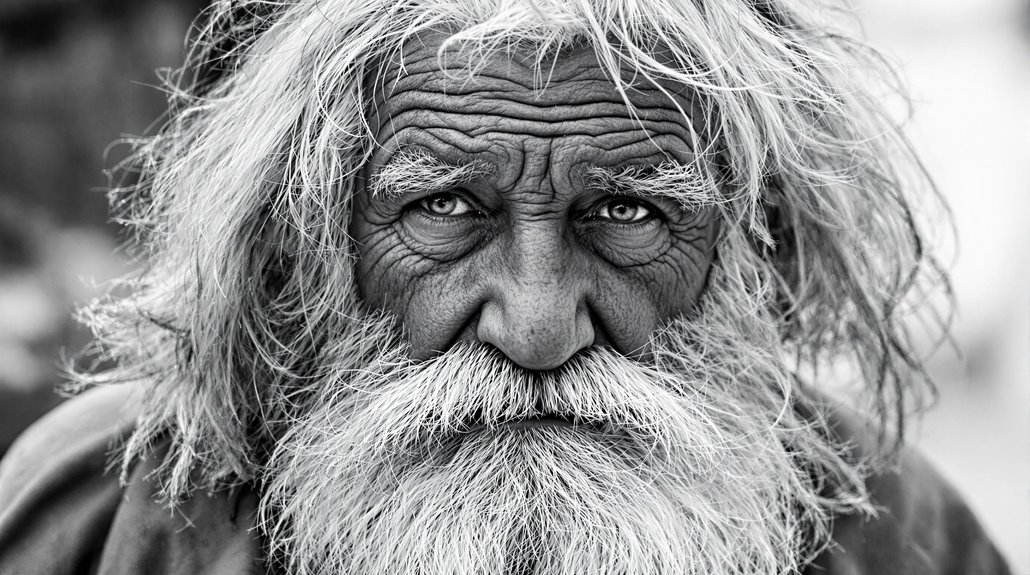
Beards originally had two main purposes: survival and social status. Their thickness provided crucial protection against harsh climates, aiding survival by safeguarding the skin against frostbite and windburn. Additionally, they worked as natural cushions during physical confrontations, reducing the risk of facial injuries. Culturally, beards signified masculinity and dominance, providing an intimidating presence in early social structures. Losing a beard could even signify punishment and dishonor. Today, they're often viewed as markers of style or lifestyle choices. Fascinating, isn't it? If you investigate further, you'll uncover more intriguing details about the social and historical relevance of beards.
Prehistoric Significance of Beards
In the harsh climates of prehistoric times, beards held a significance beyond mere fashion or trend. They provided vital protection from the elements, helping men bear the cold. Your beard, if you lived then, would act as a natural shield, defending your face from frostbite and windburn. It would also serve as a cushion in physical altercations, reducing the risk of facial injuries.
But the significance of the beard didn't stop at physical protection. It was also intertwined with notions of masculinity and status. A thick, full beard was a display of intimidation, enhancing your presence within early social structures. It was a symbol of your manhood, a visible marker of your prowess and strength.
In certain prehistoric cultures, losing one's beard was considered a severe punishment. If your beard was cut, you'd be marked with dishonor and a loss of status. Men of honor, on the other hand, were entitled to keep their beards. This was a reflection of their integrity and societal standing. Fundamentally, prehistoric beards were more than just facial hair; they were badges of survival, masculinity, and honor.
Cultural Importance Across Civilizations
Imagine if your beard held such cultural weight that it was used to swear upon in serious matters, or even served as collateral for debts. It's hard to fathom, isn't it? But in Celtic tribes, that's exactly how it was. The cultural importance of beards was profound, symbolizing solemn oaths and financial commitments.
In ancient Indian society, a long beard was not just about aesthetics. It was a symbol of dignity and wisdom, a visible proof of one's character. To have your beard cut off was not just a cosmetic alteration, but a significant loss of honor. It was a punishment for moral failures, a social custom that underlined the deep respect surrounding facial hair.
Even in the Middle Ages, touching another man's beard was considered offensive, a violation of personal space and respect. The cultural importance of beards transcended the physical, encompassing societal norms, economic significance, and personal dignity. So next time you stroke your chin, remember, the beard is more than just a fashion statement. It's a relic of ancient societies, a reflection of the weight of tradition and culture.
Beards in Ancient Societies
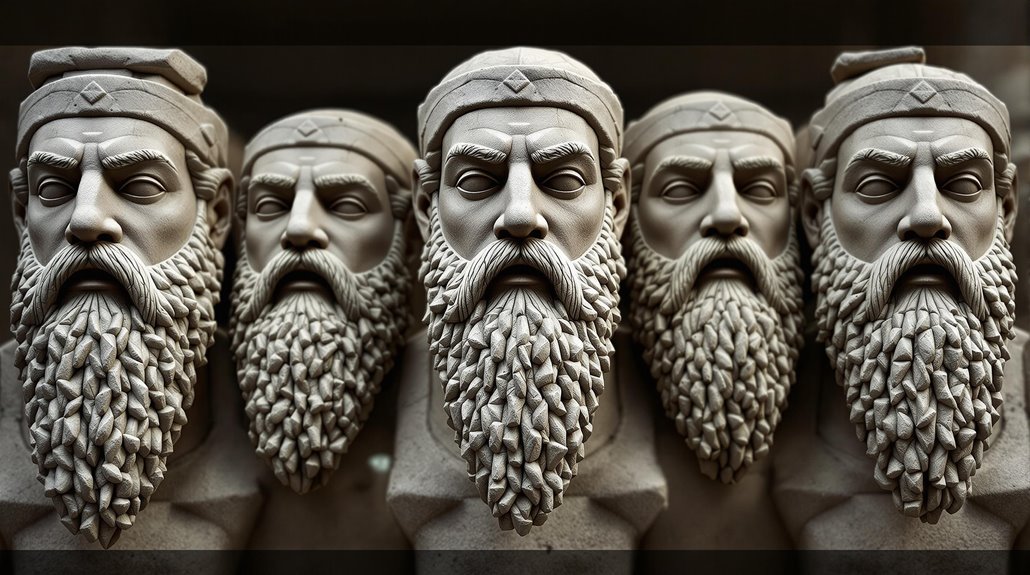
Picture yourself as an ancient Egyptian, where your beard isn't just facial hair, but a symbol of wealth and power, often decorated with gold thread to show off your elite status. Your beard isn't merely aesthetic; it's a badge of honor, a telltale sign of your standing in society.
Across ancient societies, beards held significant meanings. Here's a quick glance:
- Mesopotamia: Beards were a sign of social standing. They weren't merely grown, but groomed with oils and balms to maintain their luster.
- Ancient Greece: Beards symbolized virility and wisdom. If you showed cowardice in battle, you'd face the humiliation of being shaved.
- Ancient India and Celtic Tribes: Here, long beards were equated with dignity and wisdom. Cutting a beard was a grave punishment for moral failures in India, while Celtic tribes swore serious oaths upon them.
In these societies, beards were more than just facial hair - they were symbols of wealth, power, wisdom, and virility. Understanding this gives you a deeper understanding of the role of beards in ancient societies. Fascinating, isn't it?
Military and Social Aspects of Beards
Moving from the ancient era to the Middle Ages, you'll see that the beard's importance didn't wane; it simply evolved. Knights accepted beards as symbols of honor and virility. It was such a mark of masculinity that touching another man's beard without permission could spark a duel. Military grooming wasn't a one-size-fits-all concept. French soldiers styled their facial hair to denote different roles, while British Army rules required moustaches from 1860 to 1916.
The term "Poilu," referring to the hairy French soldiers of World War I, underscored the link between beards and masculinity in conflict times. Contrastingly, the Catholic clergy often went clean-shaven, a symbol of their celibacy commitment, starkly differing from the bearded knights and military men.
Modern Beard Trends and Perceptions
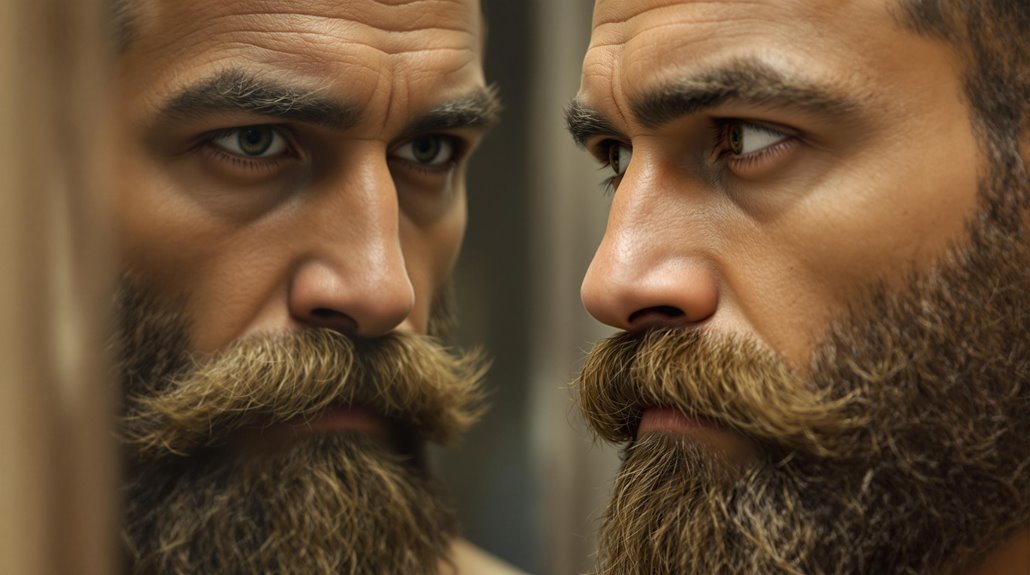
Remarkably, modern beards have made a significant comeback in recent years, becoming increasingly popular across diverse social and demographic groups. The resurgence of beard trends isn't simply about growing facial hair, it's about personal grooming and expressing masculinity. Men with beards are often perceived as more attractive, as they project an image of maturity and dominance.
- The perception of full-bearded men: Surveys reveal that you, as a man with a full beard, can be seen as older, more respected, and possess a higher social status. Your beard signifies wisdom and authority.
- The rise of beard culture: Social media platforms have fueled this trend, popularizing a variety of beard styles. It's not uncommon to see men showcasing their facial hair, regardless of urban or rural settings.
- The grooming industry's response: With the demand for beards comes the need for quality grooming products. From oils to balms and conditioners, the market is teeming with products that help maintain your beard's health and style.
Men today prioritize grooming and maintaining their beards as a form of identity and self-expression. After all, your beard is more than just facial hair; it's a symbol of your masculinity and attractiveness.
Biology and Growth of Beards
Understanding the biology behind beard growth is vital in appreciating its role as a symbol of masculinity. Your facial hair progression starts around puberty when hormonal changes kick in, triggering the development of a beard around the time of 18.
Key to beard growth is Dihydrotestosterone (DHT), a derivative of testosterone. This hormone stimulates your hair follicles, determining the rate and density of your beard. However, it's not all down to hormones; genetic factors also influence your beard growth.
Interestingly, testosterone levels can fluctuate seasonally, which impacts DHT production, further affecting your beard growth patterns. So, don't be surprised if your beard seems fuller in different seasons.
To maintain comprehensive hair health and improve your beard's appearance, regular grooming practices are key. Exfoliate and use soap or shampoo to keep your beard clean. Conditioners and oils aren't just for aesthetics; they also promote a healthy, soft beard.
Here's a curious fact: DHT, the hormone important for your beard, is also linked to male pattern baldness. This interconnectedness of beard growth and comprehensive hair health is just another fascinating aspect of human biology.
Cultural and Historical Significance
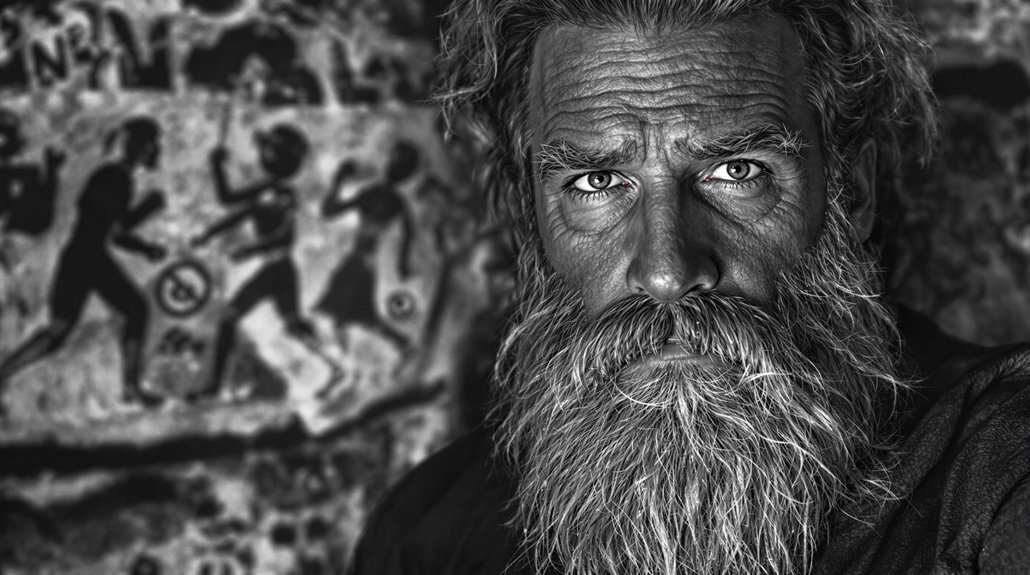
Now that you've grasped the biological mechanisms behind beard growth, let's shift our focus to the cultural and historical significance of beards. Beards are more than just a fashion statement. They've played a vital role throughout cultural history, symbolizing everything from masculinity to social standing.
- The ancient Greeks were serious about their beards. They associated well-groomed beards with virility, wisdom, and a higher social status. Beard grooming was an important ritual, signifying a man had come of maturity.
- In ancient Egypt, beards were a symbol of wealth and power. The elite would even adorn their beards with gold thread, emphasizing their high standing within society.
- Celtic tribes also valued beards. They'd swear oaths upon them, indicating their importance in serious cultural matters.
From the Middle Ages, where knights wore beards as a symbol of status and honor, to ancient India, where a long beard represented dignity and wisdom, it's clear that beards have always held a deep cultural significance. So, next time you stroke your beard, remember, you're partaking in a tradition that goes back millennia.
Evolutionary and Philosophical Associations
Diving into the domain of evolution and philosophy, you'll find that beards carry significant weight. From an evolutionary perspective, beards are secondary sexual characteristics, signaling sexual maturity and physical dominance. Charles Darwin proposed that sexual selection played a key role in the evolution of beard styles, enhancing the attractiveness of bearded men to potential mates. Even today, women often perceive men with beards as more attractive, associating facial hair with masculinity and strength.
In the ancient Greek period, beards took on a philosophical dimension. They became synonymous with wisdom and philosophical thought. Prominent figures like Socrates, depicted with a beard, embodied this intellectual symbolism.
Over time, the cultural perception of beards has evolved. They're now not just signs of physical masculinity, but also indicate deeper values. A beard can symbolize authority, shaping societal norms around what it means to be masculine. Today, the beard is more than just facial hair—it's a reflection of our evolutionary history, philosophical associations, and societal values.
Beard Styles and Grooming Practices

As you investigate the world of beards further, it's clear that not only the existence but also the management of this facial feature holds importance. Diverse beard styles, such as full beards, goatees, and Van Dykes, each require specific grooming practices for ideal appearance. It's not just about growing facial hair, it's about the maintenance.
- Beard trimmers are a staple in any bearded man's bathroom. These handy tools allow for precise shaping and trimming, ensuring your beard style stays on point.
- Regular grooming isn't just for aesthetics, it's essential for hygiene too. Products like oils, balms, specialized soaps, shampoos, and conditioners are all part of extensive facial hair care.
- Historical figures like the Vikings didn't just grow beards, they groomed them. They understood well-groomed beards could instill fear, reflecting their societal norms and values.
Evidently, the art of maintaining a beard goes beyond its growth. It's about finding the right style for you, using the right tools for maintenance, and upkeeping your beard with proper grooming practices. Your beard says a lot about you, make sure it's a statement you're proud of.
Historical Trends in Shaving and Beard Perception
Consider the ebb and flow of beard popularity throughout history, starting with the ancient Greeks. You'll find that their relationship with beards changed dramatically when Alexander the Great ordered his men to shave. This act of military strategy initiated a 400-year trend of beardless men in Greece and Rome.
Fast forward to the Renaissance period, and bearded men are back in vogue. Facial hair becomes a symbol of status and artistry, with different styles reflecting societal expectations and interpretations of masculinity. But by the 1700s, historical trends take another turn. Shaving is now considered respectable and gentlemanly, largely due to Louis Pasteur's germ theory promoting it as a hygienic practice.
Enter the 20th century and King C. Gillette revolutionizes shaving practices with his safety razor. This innovation leads to a boom in the sales of shaving products and accessories. However, as the century progresses, workplace regulations increasingly demand clean-shaven appearances. This reflects broader societal norms regarding professionalism and personal grooming, and greatly impacts our perceptions of bearded men, even today.
